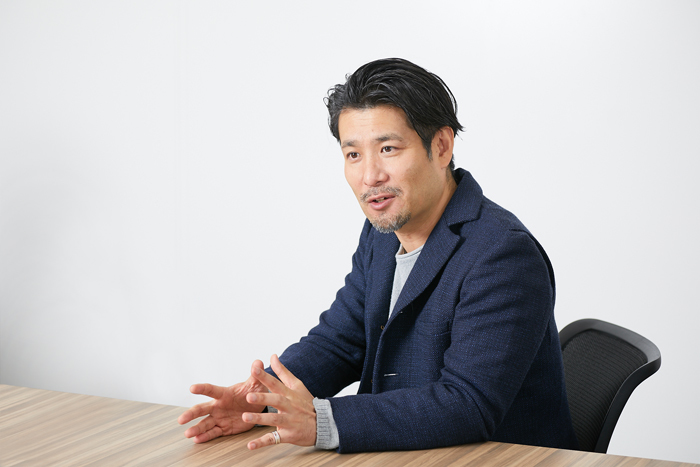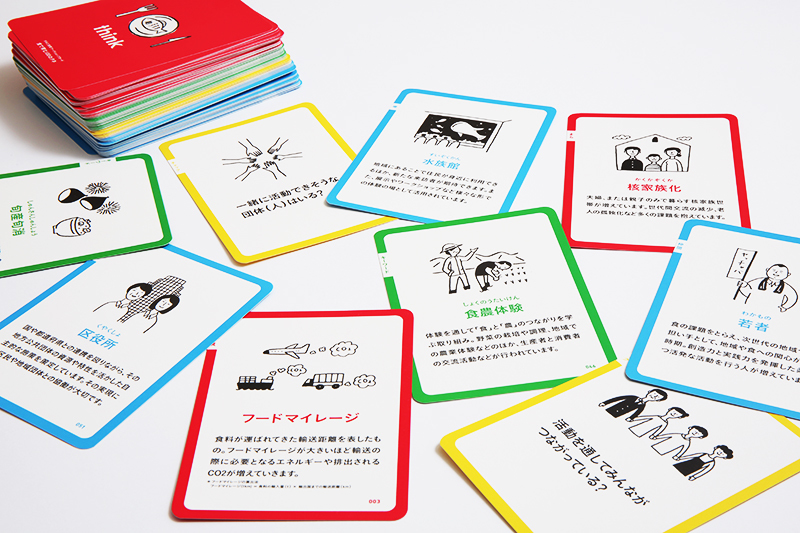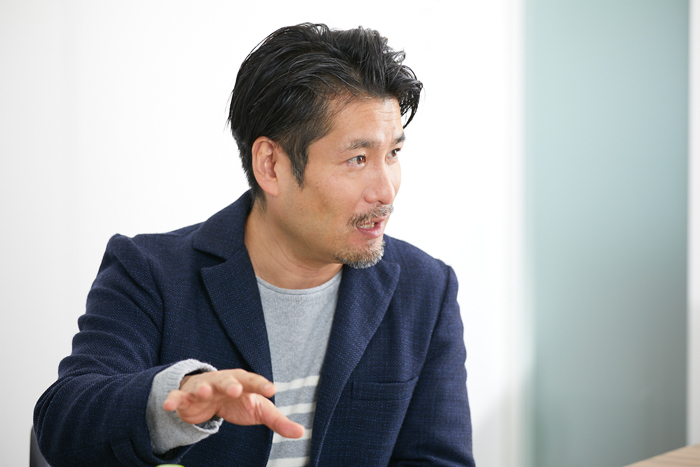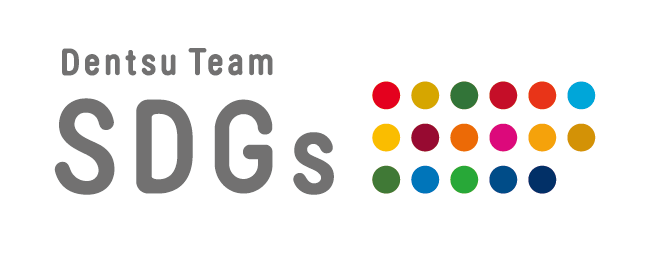Building sustainable partnerships to realize the SDGs
In this series, we speak with various experts and practitioners to explore hints for achieving the SDGs (United Nations Sustainable Development Goals).
This time, we spoke with Ryo Yamazaki, a "community designer" who designs human connections, about "team building" for achieving the SDGs.
What should we pay attention to when connecting people involved in regions and organizations to create sustainable, collaborative communities? What does Mr. Yamazaki envision the SDGs to be?

Building a "community that thinks for itself and solves problems" in about three years
──Mr. Yamazaki, you've been engaged in community design since around 20 years ago, long before the concept of SDGs even existed. You established studio-L, a company specializing in community design, in 2005. Since then, you've continued your energetic activities as its CEO and community designer. First, could you tell us about your encounter with community design and your journey so far?
Yamazaki: I originally worked as a designer at an architectural firm that handled many public facility projects. Back then, I often wondered, "Why are so many public facilities difficult to use?" There were numerous parks, museums, concert halls, and other spaces built without listening to the users—essentially treated like "artworks." I always felt this was problematic.
That's when I started pursuing a collaborative approach to architectural design, where we gather the people who will likely use the facility and design while listening to their voices. Unlike residential buildings, public architecture requires synthesizing the voices of tens of thousands of people. My first thought was, "How can I elicit opinions from so many people?" and I began researching methods.
Along the way, I learned about workshops as a method. I studied them through books and started practicing by imitating what I saw. As I did this, I found the workshop part became more interesting than the actual design work. That's why I started studio-L, a company focused solely on conducting workshops.
In other words, it wasn't that I thought, "I'm going to do community design!" I was just doing what I felt was necessary to properly execute design, and before I knew it, I had arrived at community design.
──What kind of community design does Mr. Yamazaki handle?
Yamazaki: In a word, it's "building community." The projects we're asked to do are incredibly diverse—things like "Please help us create a system for community-based integrated care" or "Please develop a food education plan." We're also involved in nurturing young leaders, meetings to repurpose former elementary school sites, and developing specialty products for remote island districts. In response to these requests, we connect people, support the growth of trust among them, and ultimately aim to cultivate communities capable of solving their own challenges.
When engaging with each project, I firmly commit to "withdrawing within three years." Typically, during the first meeting, I state, "We'll be withdrawing after three years," and explain, "We'll support changing the situation with all our strength and sincerity, but ultimately, only you can make the change." The people of the community understand their own area best, and I believe it's most crucial that activities continue even after we're gone.
People around me sometimes say, "You'd make more money if you stayed longer" (laughs). But I believe community design is about creating a community that truly takes ownership, becomes self-sustaining, and continues on its own.

Through meticulous preparation, we create spaces where participants can enjoy themselves and open up.
── Could you explain specifically what you do over the three years?
Yamazaki: The first year is mainly research and planning. We talk to various stakeholders, organize the situation and relationships, and figure out how to proceed... Around the end of the first year, we announce workshops via flyers and social media. Since we've built some connections during the first year's preparation period, when we recruit, about 100 to 150 people usually show up. Then, starting in the second year, we hold workshops regularly.
For example, in Sumida Ward's "Food Education Plan Development Project," we held about 10 workshops. This led to the creation of the "Sumida Food Education Workshop Cards," an idea born from the workshops. These cards are like "discussion starters" featuring various food-related keywords.

They were created so workshop participants could use the cards to hold mini-workshops at local schools and other venues, aiming to spread co-creation around food education. In fact, 15 new food education initiatives have emerged within Sumida Ward.
──It's truly self-sustaining and ongoing. What kind of activities take place in these workshops? Are there any tips or key points for workshops that connect communities like this?
Yamazaki: The basic format is a standard workshop where groups of about six people organize issues using sticky notes and flip charts. However, the content is customized for each project based on the local context and participants.
For example, we might allocate more time for thorough self-introductions or have participants sit in a large circle for discussions. We base our workshops on about 100 different methodologies, creating truly customized sessions.
Recently, we often do 40-minute self-introductions. We pair people up, and each person gives a 20-minute self-introduction. Since asking someone to suddenly "talk for 20 minutes" can be difficult, we first prompt them with something like, "Look at the person next to you and give them a smile!" or instruct them, "Later, you'll introduce the other person, so jot down anything that makes an impression." To help conversations flow smoothly, we also provide an interview sheet beforehand with questions and time allocations.
Approaching self-introductions with this preparation means things start a bit awkwardly. But as participants discover each other's backgrounds, unexpected commonalities, or gaps between first impressions and reality, the energy builds rapidly. By the 40-minute mark, it's not uncommon for them to feel like best friends. There's even a sense of a "secret bond formed by sharing things you shouldn't know," which really fosters a strong team spirit.
In other words, the outcome of a workshop is largely decided before it even begins. Conducting preliminary interviews to identify characteristics like "these people seem likely to get excited about this" or "they tend to lean this way," then thoroughly planning and preparing accordingly. And if things aren't going well, being flexible enough to change the plan. I believe this is the key to workshops that build strong communities.

SDGs aren't something you aim for; they're something you look back on and confirm
──Hearing you talk, I feel community design is very much an SDGs-like activity; you could even say the entire initiative is SDGs. Do you personally consciously think about the term SDGs?
Yamazaki: Since I've been doing this for 20 years, I don't consciously think about it much... I don't believe the SDGs' philosophy is something you consciously aim for or strive toward. If you're genuinely and earnestly doing what you believe is the right thing, you'll likely naturally move closer to achieving them. When starting something new, people often look at the list of SDG goals and discuss things like, "For this project, let's aim for Goals 3 and 10." But I think it's not about that. It's about focusing on the more fundamental aspects and realizing them.
We should do what we genuinely believe is right as human beings, and only afterwards reflect: "By the way, which of the 17 goals are we contributing to?" That's how I think we should check.
Put the 17 goals aside for now. Think about "What problems are society facing right now?" and "What projects are truly needed?" Pursue what you believe is right, centered on nature and society. That mindset is what's needed.
"Why don't we start the meeting by first trusting ourselves and thinking about what we believe we should do?" It might sound naive, but I think starting from there is crucial.
──So for you, Mr. Yamazaki, what you felt you should do was "design architecture while listening to the voices of the users." Pursuing that led you to workshops and community design, right?
Yamazaki: That's right. We focus on workshops and community design because while we can't change the world, we believe we might change about 100 people within a region of 100,000 residents. If these 100 people then passionately share something with another 100, surely around 10,000 people will become aware of something. I believe that if the consciousness of 10,000 out of 100,000 people changes, the region changes.
Change 10%, and something shifts. Believing this, we constantly ponder: "How do we cultivate 100 people who think deeply?"
I don't think working on the SDGs is difficult at all. First, I want people to trust the natural and human qualities within themselves... those pure, innate senses and sense of right and wrong. I hope they'll use that as their starting point for thinking about things and begin changing their actions starting with what's close to them. Doing so will gradually free them from the mindset that prioritizes business growth and expanding numbers. As more people like this emerge, society will change. It will take time, I think, because the SDGs aren't something you can achieve efficiently in the first place. I believe the only way is to persistently and earnestly keep engaging with them.
"Is that right?"
Just remember this one question for now. If you're thinking about getting involved with the SDGs, start by constantly asking yourself this and acting accordingly.

TeamSDGs collaborates with various SDG stakeholders to disseminate information about the SDGs and plan/develop solutions.
※See also Koichi Kaneda's article
Interview with Community Designer Ryo Yamazaki: The "Efforts" and "Literacy" Needed for SDGs
Was this article helpful?